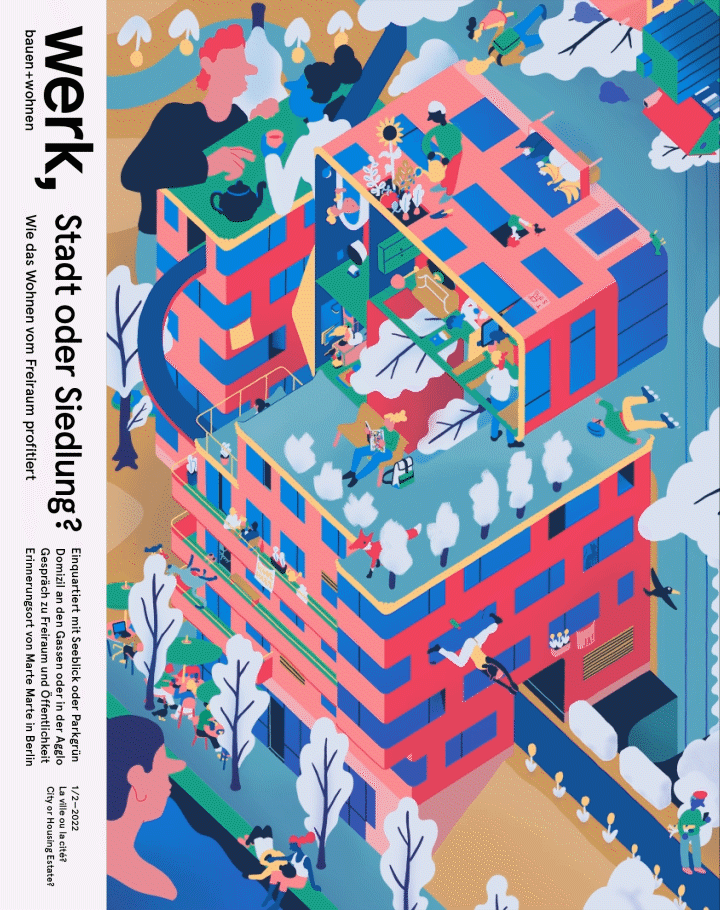werk, bauen + wohnen 1/2 – 2022

Can the Housing Estate also be City?
With its front gardens and monocultural residential quality the housing development or estate may not seem particularly urban, but its popularity has grown dramatically during the Corona year. It offers nearby open space, light, sun, views, greenery — and neighbourliness instead of anonymity. But unfortunately, it generally turns its back to the city, to the public street and relates far too much to itself alone. How might it find a stronger connection to the urban space?
By “housing estate” we mean a development on a larger site with a uniform architecture and environmental design. Generally, it lacks an urban mix of functions, but all the same the housing estate is not a phenomenon that has come into the city from the agglomeration: its origins actually lie in the city and a backward glance at history reveals models ranging from the Riedtli development in Zurich to the Square Montchoisy in Geneva that were — and are — very definitely urban. How could one not regard such developments as parts of the city worth living in?
Thanks to its size, in the estate spaces can be made that are oriented towards a collective. These can be actual communal spaces or, at least, open spaces planted with trees that give the development a centre and an identity — and places where the extent to which they are public is not immediately apparent. In contrast to the urban rigeur of eitheror, the housing development is based on the many steps in between. Intelligently moderating the transitions between public and private areas is a specific quality of the housing estate. This task is particularly interesting when the aim is to establish a connection between the housing development and public space. And so, this issue makes a little plea for the housing development — in particular where it where its uncontested qualities, the supply of open space and the potential to create a community, can help to develop an urban quality. Our examples from Geneva and Zurich, Altdorf and Schlieren offer evidence of this and show that what is required here is close interplay between architecture and landscape architecture. — Daniel Kurz, Roland Züger